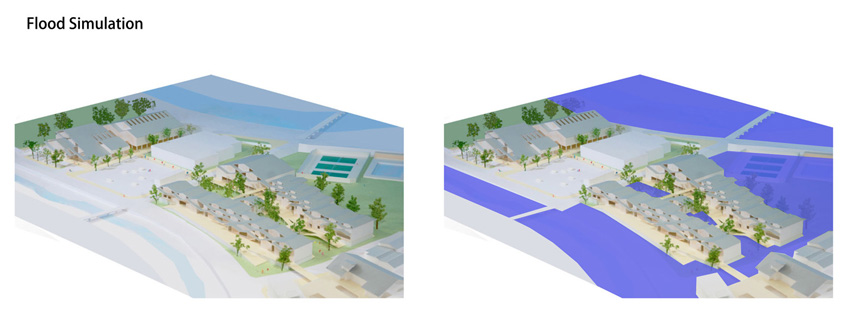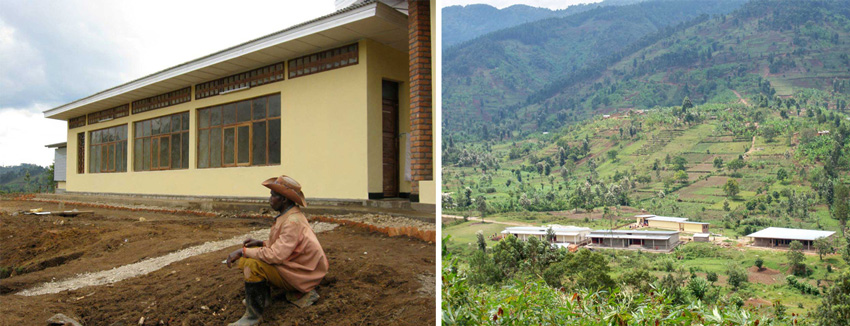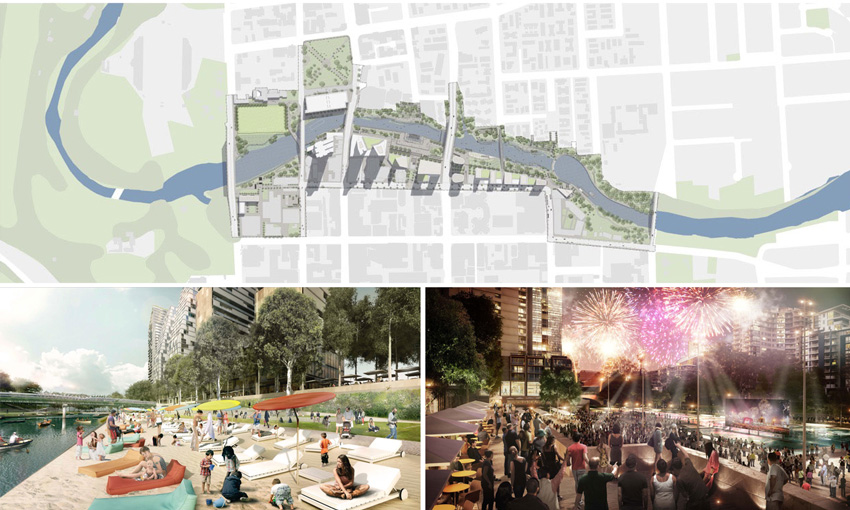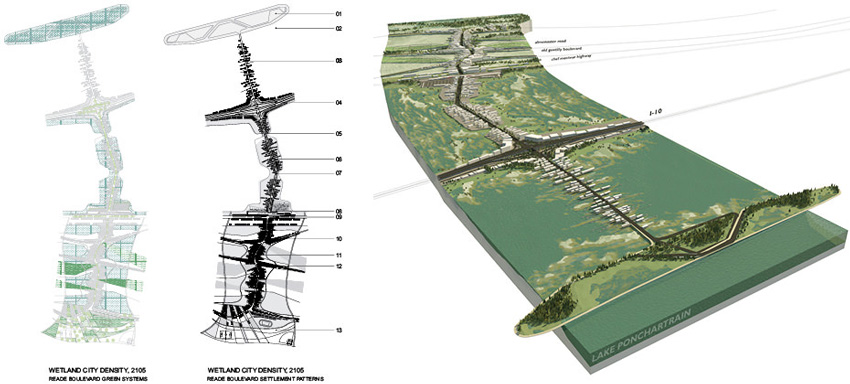Resilient Building Design
Connecting Resilience and Sustainability
Anyone who has been engaged in green or sustainable building and community design will recognize that there are many shared design strategies with resilience. At the most basic level, this starts with an understanding of the regional climate zone and other natural conditions that will affect the design and operation of the buildings in that region, whether in normal or severe times. Green building designs typically look at these regional issues as a basis for energy code compliance at a minimum or full site analysis to determine how to take advantage of the resources available. Resilient design benefits from this same analysis and approach first to understand and plan for both the normal and anticipated changes in natural conditions, weather, temperature, etc. Then, an assessment of the on-site or local resources that can be tapped into as permanent or temporary reserves for building operations can inform vulnerabilities or risk reductions based on the availability of those resources. These natural resources can be used to overcome interruptions in service by public utilities and maintain a degree of normalcy until full service is restored.
Water is a primary concern in both sustainable and resilient design on several fronts. First, a reliable drinking water supply is needed for human life, but water conservation techniques make sense in all cases to avoid the unnecessary wasting of water. If the water supply system requires a public source or the use of electricity to pump the water, then it may be compromised during times of emergency situations.
A more sustainable and resilient approach would be to use on-site collection of water, at least for non-potable uses while preserving drinking water in the process. Water drainage is similarly an issue to address, either in terms of plumbing waste or surface water drainage to prevent flooding.
From a sustainability standpoint, plumbing waste can be minimized through water-conserving fixtures and on-site treatment of grey water. From a resiliency standpoint, flooding may impact the ability of on-site groundwater absorption so conservation and waterless alternatives may be even more important. Designing on-site systems with backup or overflow capabilities can become critical in flooding situations, too.
Energy is a similarly strong concern in both sustainability and resilience. The most effective strategy in both is to reduce the need for energy in the first place. That happens through better building design, usually with a focus on the design of the building envelope or enclosure. New or existing buildings will benefit from well-insulated walls, roofs, and floors with windows, glazing, doors, and skylights that are sized and specified to suit the building’s local climate. They will also benefit from designs that allow occupied spaces to be filled with natural daylight and have the option of natural air flow or ventilation, thus not requiring electricity for either when conditions allow. Where building systems need to be run, such as HVAC or electrical systems, having the ability to control those systems so they are only running when and where needed at the highest efficiency possible will further reduce the need for energy usage in the first place.
With the energy demand under control and the efficiencies maximized, the next step of both sustainability and resilience is on-site energy. In a traditional building, diesel-powered generators are often used. In a sustainable building, on-site renewable energy is used. The beauty of the sustainable approach is that renewable energy is generally available all the time, not just during an event. To guard against being compromised, say from a lack of sun for a solar electric installation, on-site storage in batteries or a heat storage system can carry a building or a group of buildings through an event and enhance their resilience. In this way, the sustainable building is providing energy and functioning well in normal times with renewable energy and can become a welcome safe place in the event of an emergency, too.
Assessing Performance and Design Effectively
With an understanding of the issues and a group of resources to pull from, the process of creating resilient, purpose-driven designs can be enhanced by good design tools, including design software. In this case, the power of the computer isn’t limited to only creating renderings or working drawings, but rather is a powerful design tool that can help perform simulations of normal and severe conditions. It can also be used to analyze different options to maximize both sustainability and resilience.

Images courtesy of SUEP. and Vectorworks, Inc.
BIM can be used to produce accurate flood simulations that inform truly resilient design. On the left, normal land and water conditions are shown, while on the right, flooded conditions are depicted showing the buildings are not affected.
Computer design can begin with assessing conditions at the regional and community scale. At this level, a geographic information system (GIS) can be used as a means to capture, store, manipulate, analyze, manage, and present all types of spatial or geographical data. This is particularly relevant for things like natural topography, terrain, natural resources, vegetation, water resources, utilities, roadways and transportation, etc. The characteristics of each of these can be assessed for typical conditions and then looked at in terms of how they respond to extreme conditions, short term or long term. That analysis can directly inform building designs. For example, the Ninth Ward in New Orleans has famously been the recipient of Brad Pitt’s Make It Right Foundation, which has solicited well-known architects to provide pro-bono services for innovative, flood-proof houses. The computerized site analysis allowed for a number of creative designs that ranged from raised houses on a variety of “stilts” to tethered structures designed to float upward as the water level increases.
Within the building, building information modeling (BIM) workflows can be used as a tool for visual design and assessments as well as the determination of meeting performance criteria. That criteria can include structural system strength under extreme stresses from water or wind, or energy performance criteria for energy efficiency, daylighting, or ventilation. Each can be looked at independently and then assessed collectively for their interaction and the total design of the building. Shared BIM files also allow a multidisciplinary team to collaborate as a design progresses and is refined. With high-quality, three-dimensional visualizations, it makes it very easy for the outcomes to be shared within the design team so the challenges can be clearly articulated and solutions arrived at collaboratively. Similarly, high-quality visualizations and even animations can be used for communicating outside of the design team with community leaders, first responders, building owners, and the general public.
As an innovative example of this type of collaboration, Greg Henderson is a licensed architect who is using his knowledge of structural design and BIM technology to inform his work on something he has termed magnetic field architecture (MFA). Based on principles similar to trains and other vehicles that have been designed to ride along a magnetic field without touching any tracks, he envisions separating a building from its structural supports when needed in order to survive catastrophes, such as earthquakes or flooding. “The relationship between electricity and magnetism and light isn’t well understood, but I wanted to keep examining it because I think we can form a new understanding of this energy within our lifetimes and use it to do incredible things,” he says.
The premise of this life-saving technology is simple: work in harmony with Mother Nature rather than fight against her. Henderson’s patented, three-part foundation system is based on the concept of decoupling structures from the earth with a fluid or gas, allowing for the energy from natural disasters to gradually impact a building rather than strike all at once. For example, with advanced knowledge of a pending earthquake, one could activate the hover technology to lift homes up off the ground for the duration of the tremors, allowing the seismic energy to dissipate through the air. Similarly, if a hurricane threatens flooding in a coastal community, use the existing water on-site to float the buildings in the flood zone out of harm’s way, creating a liquid buffer from the violent storm surges. “With MFA technology, you could build homes in a flood zone without having to worry about the flood levees breaking or design an office near a fault line without fearing earthquake damage,” Henderson says. Using MFA as a core part of our urban infrastructure may take years of development, but it may have short-term applications that will transform our world, as well.

Photos courtesy of Arx Pax, LLC and Vectorworks, Inc.
Digital technology and BIM are helping architects apply very creative thinking to their work, such as this magnetic field architecture that may one day elevate a building out of seismic or water forces.
Conclusion
Changing environmental conditions and concerns coupled with increased awareness of their impacts on people are pushing the limits of design and construction. Architects and others involved in purpose-driven design are at the forefront of confronting social and environmental concerns head on through innovative design and construction strategies. Communities around the world are recognizing that their buildings and regions need to be more resilient in order to handle anticipated natural events. Designers who embrace the call to meet these needs can use readily available computer technology to respond with buildings and communities that are truly sustainable, more resilient, and better for all of the people who inhabit them.
Peter J. Arsenault, FAIA, NCARB, LEED AP, is a practicing architect, sustainable building consultant, continuing education presenter, and prolific author engaged nationwide in advancing better building performance through design. www.linkedin.com/in/pjaarch

|
Vectorworks, Inc. is the developer of Vectorworks software, a line of industry-specific CAD and BIM solutions that help more than half a million design visionaries transform the world. www.vectorworks.net. |











